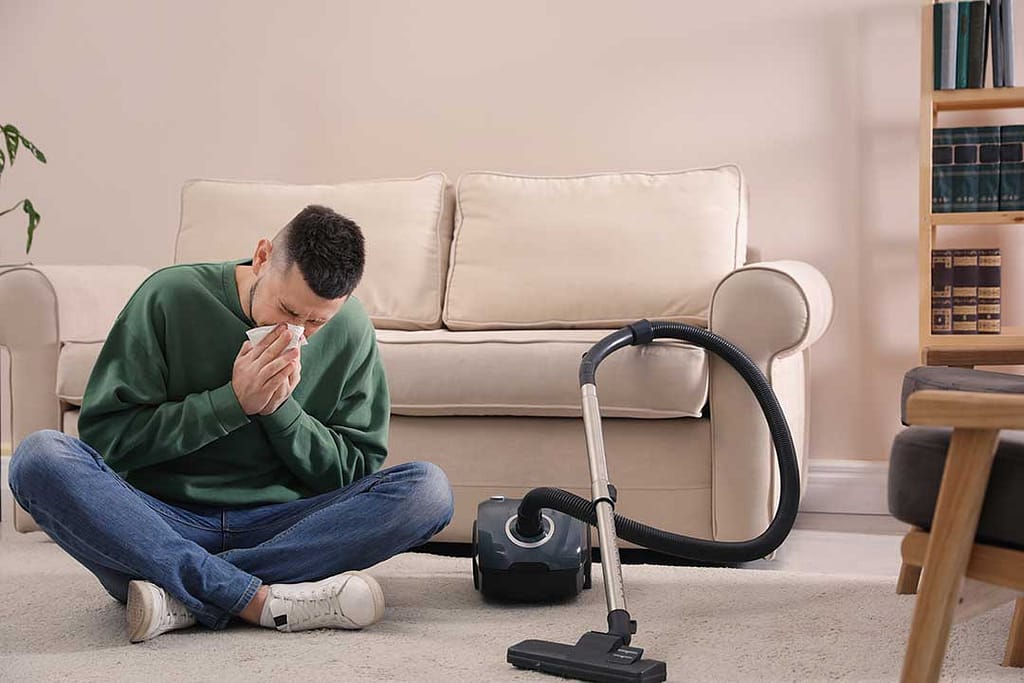The Best Flooring Options for Allergy Sufferers
When you have allergies, creating a healthy home environment is essential. One of the most significant contributors to indoor air quality is the type of flooring you choose. Different flooring materials can either trap allergens or help minimise them, impacting the health and comfort of allergy sufferers. This blog will guide you through the best flooring options for allergy sufferers, helping you make an informed decision for a healthier home.
Understanding Allergens in the Home
Common indoor allergens, such as dust mites, pet dander, pollen, mould, and chemical sensitivities, can significantly affect your health. Flooring can play a crucial role in either harbouring these allergens or helping to keep them at bay. Understanding how different materials interact with allergens is the first step in creating an allergy-friendly home.

Ideal Flooring Types for Allergy Sufferers
1. Hardwood Flooring
Hardwood flooring is a popular choice for those with allergies. Its smooth surface makes it easy to clean, and it doesn’t trap dust or allergens. Hardwood can be an excellent investment, adding value to your home. However, it can be costly and requires regular maintenance to prevent moisture damage.
2. Laminate Flooring
Laminate flooring offers a budget-friendly alternative to hardwood. It’s hypoallergenic and easy to clean, making it a suitable choice for allergy sufferers. However, some laminate products can emit VOCs (Volatile Organic Compounds), so it’s crucial to choose low-VOC options and ensure proper installation.
3. Tile Flooring (Ceramic and Porcelain)
Ceramic and porcelain tiles are non-porous, making them resistant to moisture and mould. They are easy to clean and do not trap allergens, making them an excellent option for allergy sufferers. The downside is that tile flooring can feel cold and hard underfoot, and it can be slippery when wet.
4. Vinyl Flooring
Vinyl flooring is another cost-effective choice that is water-resistant and easy to maintain. It’s available in various styles, including options that mimic hardwood or tile. Like laminate, some vinyl products may emit VOCs, so selecting low-VOC options is essential.
5. Cork Flooring
Cork flooring is a more eco-friendly option that is naturally resistant to mould and mildew. It provides a comfortable surface underfoot and has hypoallergenic properties. However, cork requires sealing to prevent moisture damage and may not be as durable as other options.
Flooring Types to Avoid
1. Carpet
Carpet can be a significant trap for dust, allergens, and pet dander. Even with regular cleaning, it can be challenging to remove all allergens from the fibres, making it a less suitable choice for allergy sufferers.
2. Natural Stone
While natural stone can be beautiful, its porous nature can trap allergens. It requires regular sealing and maintenance to prevent allergens from settling in, making it a less practical option for those with allergies.
Tips for Maintaining Allergy-Friendly Flooring
To keep your home as allergy-free as possible, regular cleaning is essential. Vacuuming, sweeping, and mopping should be done frequently, ideally with a vacuum cleaner that has a HEPA filter to trap small particles. Managing moisture levels in your home is also crucial, as high humidity can encourage mould growth. Opt for low-VOC adhesives and finishes when installing or refinishing floors to minimise chemical sensitivities.
Additional Considerations
When choosing flooring, consider your personal preferences, lifestyle, and budget. While some options may be more expensive initially, they can offer better long-term value. Professional installation is also critical, as improper installation can lead to issues like gaps or moisture infiltration, which can exacerbate allergy symptoms.





